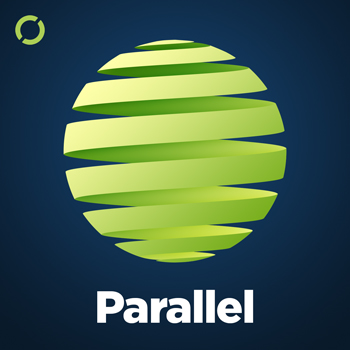Latest Episodes
#93: The Last Show
June 26th, 2024 · 90 minutes
Today, we offer an all-star panel of podcasters and tech pundits with a lot to say about the first 15 years of mobile accessibility from Apple. To my delight, the show veered hard into present and future topics. Also, Parallel says farewell.
#92: Dystopian Skynet Future – Sometime Next Year
May 29th, 2024 · 53 minutes
What are the takeaways from Global Accessibility Awareness Day #GAAD 2024? We highlight accessibility announcements from Apple and BeMyEyes.
#91: I'm VR Curious
March 19th, 2024 · 59 minutes
Zoe Knox bought a Vision Pro when they first became available, anticipating that Apple's headset would provide accessibility features. How those features might work with Zoe's low vision? That was a big unknown.
#90: I Want to Pinch and Zoom the World
February 13th, 2024 · 58 minutes
Apple's Vision Pro headset offers a number of accessibility features. But how well do they serve those with disabilities, and what should we expect from future versions of the product? Now we have some answers.
#89: Low Vision Pro
January 9th, 2024 · 30 minutes
I spoke with Steven Scott and Shaun Preece for their show, Double Tap. They wanted my thoughts on how Apple's Vision Pro might land with users who have low vision. Steven kindly gave me permission to republish that conversation here.
#88: How Hard Could XCode Be?
November 22nd, 2023 · 49 minutes
How a young entrepreneur turned her own technology need into an app designed for other people with low-vision.
#87: A Fish On Your Washing Machine
October 10th, 2023 · 68 minutes
What's the significance of Apple's iPhone 15 lineup, from an accessibility point of view?
#86: An Immigrant in the Country of the Blind
September 13th, 2023 · 54 minutes
Andrew Leland's memoir "The Country of the Blind" tells a story about his ongoing journey into vision loss. It's also a history of blindness, and blindness tech, with stops along the way to unpack the literary deployments of vision loss by other writers.
#85: AI Will Not Fix Accessibility
July 20th, 2023 · 44 minutes
Even before ChatGPT brought AI into the mainstream, companies touted it as a way to make web sites accessible – a magic bullet that meant web devs could skip the accessibility checks normally done by humans. But it doesn't work like that.
#84: Now that We've Had Some Time to Process...
June 20th, 2023 · 47 minutes
My colleagues from the Maccessibility Roundtable join me for a conversation about Apple's Vision Pro and accessibility. We still don't know a lot, but be know more than we did an hour after the WWDC keynote.

